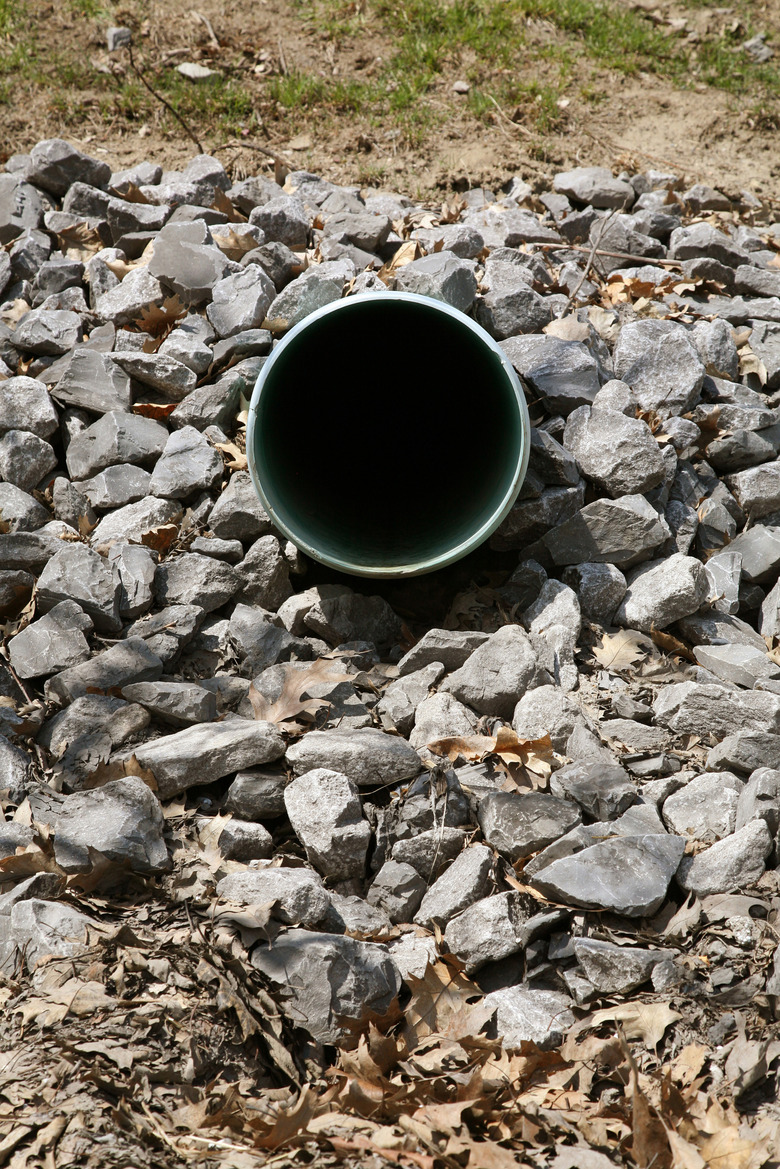Root Killers For Drain Pipes
Roots are a common problem in sewer pipes, which constitute a near-perfect hydroponic environment, and they can also become problematic in landscaping and other drain lines. An easy way to control them is to plant far from drains so that roots don't ever reach the pipes. Once the roots are established in the pipes, however, you have two options. You can blast them out, using mechanical means, or you can treat them with chemicals.
Veil and Tail Roots
Step 1
You're most likely to have blockages in the drains if you have trees or woody shrubs growing in the vicinity. If there's a steady flow in the drains, the plants will send veil roots through pipe joints or small fissures. These roots grow downward until they contact the water and create blockages whenever there's a surge, such as during a rain storm. If flow is intermittent, on the other hand, tail roots enter from the top, bottom and sides and grow in the direction of the flow. They eventually grow large enough to permanently block the pipes.
- Roots are a common problem in sewer pipes, which constitute a near-perfect hydroponic environment, and they can also become problematic in landscaping and other drain lines.
- You can blast them out, using mechanical means, or you can treat them with chemicals.
Augers and Hydro-Jetters
Step 1
If the roots are well enough established to cause a complete blockage in the pipes, then you need to clear them mechanically, and there are two common ways to do this. One way is to use an auger with blades that basically cut the roots at the pipe walls. Another is to blast out the roots with a high-pressure hydro-jetter. In both cases, the idea is to separate the roots from the plant, and then either pull them back to the insertion point where you can remove them or flush them out the other end. You can rent both machines and use them yourself to clear small pipes, heeding the safety precautions provided by the rental company. For large pipes, consider hiring a professional.
Commercial Root-Control Chemicals
Step 1
Drain-cleaning professionals have more than one root-killing chemical in thier arsenal. To be effective, the chemical must be non-systemic — it must kill the roots without harming the plants — and it must present an acceptably low contamination hazard. Plumbers often use a foam made of metam sodium and dichlobenil to kill tree roots in sewers. This combination is non-systemic, non-selective and effective, but the chemicals are classified as restricted use and aren't available to the general public. One commercial product that substitutes another restricted-use chemical — sulfamic acid — for metam sodium presents a danger of groundwater contamination if used in permeable soil. Both products are for use by licensed professionals only.
- If the roots are well enough established to cause a complete blockage in the pipes, then you need to clear them mechanically, and there are two common ways to do this.
Homemade Root Killers
Step 1
Flushing pipes with copper sulphate is a traditional way to rid them of tree roots. This chemical, which is safe to handle, loads the roots with copper and kills them, but the copper can migrate through the roots and damage the plants. Moreover, copper sulphate is an environmental pollutant. An even safer alternative is to make a paste of white vinegar and table salt or baking soda and wash it down the drain. Although baking soda and salt both seem innocuous and won't harm you or the pipes, they will render the ground around the drainage outflow area barren.
